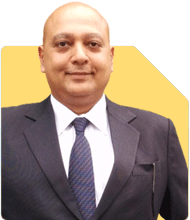Sushil Sukhwani | Answer |Ask -Follow
Study Abroad Expert - Answered on Feb 22, 2023

Namaskar Sir, My self Sunil Bhardwaj 45 Years Old. My daughter wants to study from outside India and want to do course in Fine Arts. She is 2 year drop out after 12th Medical (CBSE), prepared for NEET. Sir, need guidance if Fine Arts is a good career option. Thanks
Pursuing a career in Fine Arts requires dedication, hard work, and continuous skill development. Researching different programs and institutions and building a strong portfolio are crucial in this competitive field. A Fine Arts degree can open up various career opportunities in fields such as graphic design, animation, film, advertising, art direction, and more, with increasing demand for creative skills in industries like gaming, web design, and social media marketing. Some good career options after graduating in this field include Art director, Artist, Photographer, Production artist, creative director and many more. I recommend exploring Fine Arts programs that align with your daughter's interests and career aspirations.
You may like to see similar questions and answers below
Mayank Chandel |2575 Answers |Ask -Follow
IIT-JEE, NEET-UG, SAT, CLAT, CA, CS Exam Expert - Answered on Mar 14, 2023
Nayagam P P |10854 Answers |Ask -Follow
Career Counsellor - Answered on Jul 29, 2024
Ramalingam Kalirajan |10893 Answers |Ask -Follow
Mutual Funds, Financial Planning Expert - Answered on Dec 15, 2025
Ramalingam Kalirajan |10893 Answers |Ask -Follow
Mutual Funds, Financial Planning Expert - Answered on Dec 15, 2025
Radheshyam Zanwar |6746 Answers |Ask -Follow
MHT-CET, IIT-JEE, NEET-UG Expert - Answered on Dec 15, 2025
Ramalingam Kalirajan |10893 Answers |Ask -Follow
Mutual Funds, Financial Planning Expert - Answered on Dec 15, 2025
Ramalingam Kalirajan |10893 Answers |Ask -Follow
Mutual Funds, Financial Planning Expert - Answered on Dec 15, 2025
Ramalingam Kalirajan |10893 Answers |Ask -Follow
Mutual Funds, Financial Planning Expert - Answered on Dec 15, 2025
Samraat Jadhav |2508 Answers |Ask -Follow
Stock Market Expert - Answered on Dec 15, 2025
Ramalingam Kalirajan |10893 Answers |Ask -Follow
Mutual Funds, Financial Planning Expert - Answered on Dec 15, 2025
Reetika Sharma |425 Answers |Ask -Follow
Financial Planner, MF and Insurance Expert - Answered on Dec 15, 2025
Radheshyam Zanwar |6746 Answers |Ask -Follow
MHT-CET, IIT-JEE, NEET-UG Expert - Answered on Dec 15, 2025


























